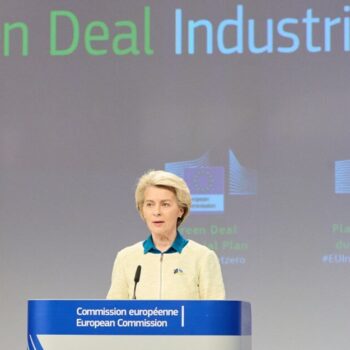The Clean Energy for All Europeans package of the European Commission includes a regulation on Energy Union Governance. This new piece of legislation has the potential to ease the delivery of the energy transition as it can facilitate investments, act as a switchboard between levels of governance and enable an orderly transition.
Facilitating investments
Investment levels are still too low in Europe to deliver the energy transition, but a transparent and credible governance framework will contribute to making Europe’s energy and climate projects more attractive. Political risks and poor choices have shaken the confidence investors have put in Europe’s commitment to deliver a low carbon economy. The Energy Union Governance plan can help provide clarity on the direction and pace of travel, the commitment by member states to reach the 2030 and 2050 targets and public resource available. It can do so in three ways.
- European climate and energy policies need to be geared towards delivering end-goals compatible with the Paris Agreement on climate change. Currently the legislative framework includes no formal, binding long-term targets. This is a significant missing part of the architecture, as binding long-term targets provide clarity on the pace and direction of travel.
- Unequivocal commitment to targets delivery. Climate and energy targets signal to businesses and relevant stakeholders the actions they should be taking as well as the potential market for their technology solution. Targets should be looked at for their level, as well as for the clarity of their enforceability. The quest for more flexibility (and less transparency) in their delivery has a cost.
- Climate and energy policies can be better designed to attract private investments by identifying private investment opportunities and better targeting public money. Investors should be involved in drafting the plan so the credibility of the assumptions is not questioned and they benefit from their support from the start.
Accompanying a multidimensional transition
The national perspective on its own is often insufficient to properly grasp the transformation energy systems and societies are going through. Policies and measures are not taking place in a vacuum but in multilayered governance framework that include the policies and structures adopted at the international level, as well as targets and policies adopted by local authorities.
The structures and mechanisms agreed to internationally should be brought home to prevent duplication and inefficiencies. The architecture set up should therefore allow for more ambition over time while better reflecting the instruments set up in the Paris Agreement. Unless the EU is adopting this approach, there is a risk that national plans and targets will not be ambitious enough, or be revised swiftly enough, to deliver the level of ambition required and therefore threaten the block’s credibility.
Facilitating and building upon the actions already carried out in cities and regions will reduce the cost of the transition while speeding up its delivery.
Setting targets is different from delivering them. However, there is still a disconnection between European, national and local policy-makers. Local and regional actors should have the opportunity to flag hurdles to the relevant authorities that are able to judge whether they represent a proportionate burden and are still necessary. This should allow for a quicker and more effective implementation of policies and measures.
Moving to a low-carbon society will impact the bloc’s economic structure and requires more proactive policies to mitigate negative social consequences. The rise of a decentralised and clean energy system will impact employment structure by creating new opportunities while moving away from others. Policy makers need to have a better understanding of the impacts of the energy transition (both in terms of opportunity and challenges) on European society to be able to pro-actively address them. The Commission and national governments should propose adequate and tailored remedies to social challenges, as it is clear not all regions will face the same challenges or will move at the same speed.
Read the full breifing paper, Governing the Energy Union: The Architecture of the Energy Transition.


